I managed to go back home to Turin for the Easter holidays to visit my mom and to bring my daughter Aoife to see the Italian family.
As I mentioned many times in my writing, my family is from Sicily on both my father and mother side. Most of the family emigrated to Turin in the early 70’s, leaving a still fairly poor south and moving north in search of better work and life opportunities. My mother and my sister still live in Turin, so when I go back home to Italy during the winter, I usually visit them there .
During these holidays Aoife and I got to spend a bit of time wandering through the city centre, and I showed her a few of my favorite sites. We also visited some of the most beautiful historical cafes (of which there are so many!).
Turin is a very elegant, beautiful and underrated baroque city, with a style and architecture that is very different from any other Italian city. Its design points more in in the direction of France (only about an hour away!) and its large viali with trees and suburban castles are sometimes hinting at Paris.
For me the baroque architecture of Turin is represented at its best by the work of Guarino Guarini (1624-1683), one of the most original architects that worked at the Turin court in the 17th century.
Let me walk you through some of Guarini’s most famous designs. Let’s start with my favorite building in Torino, the so called “Palazzo Carignano”. This palazzo was designed as prince Emanuele Filiberto of Savoy’s residence. It was the birthplace of Vittorio Emanuele, the first king of unified Italy. When Italy was unified in 1861, Palazzo Carignano became Italy’s first parliament (did you know Torino was Italy’s first capital?). Today it hosts the museo del risorgimento, which is a term used to describe the whole period that leads to the unification of Italy. The facade of this magnificent red brick building is full of curves and unexpected twists and turns, like most of Guarini’s work.
Only a few minutes from Palazzo Carignano, you can reach Piazza San Carlo, a beautiful square that hosts two of Torino’s oldest cafes.
Aoife and I stopped at Caffe San Carlo for some treats. We ordered a couple of pasticcini and I had a coffee and Aoife had a hot chocolate.
Pasticcini is an umbrella term that in Italy describes any small dessert treats. They can be little tartlets, pastries and anything in between. A tray of Pasticcini is usually a Sunday lunch treat, and something that you would pick up in your local patisserie to bring as a gift when you visit a friend or when you are invited for dinner.
Turin is actually famous for its pasticceria mignon, where each treat is incredibly small. You can see here two fruit tartlets (one custard and one chocolate) and a zabaione chantilly. Chantilly is traditionally a choux pastry cut in half and filled with whipped cream, but here they make a chocolate zabaione flavoured one. Zabaione is a kind of custard made with egg yolks, sugar and liquor wine (like marsala or vin santo).
Check out the magnificent room and ceilings of Caffe San Carlo
Only a few minutes walk from Piazza San Carlo, I brought my daughter to see my favorite church in Turin, the facade-less “cappella reale di San Lorenzo”. This small church was the private chapel of the king and is attached to the royal palace. Once inside this chapel, you can admire the most magnificent cupola, another incredible design by Guarino Guarini. It’s an intricate mosaic of octagons, pentagons and other geometrical shapes that give the illusion of a very deep perspective.
On another day Aoife and I headed towards the old part of the city centre and stopped by historical “cafe Il bicerin”.
Bicerin (Piedmontese for small glass) is the quintessential Turin coffee drink and it’s said to have been in invented in this cafe in the 19th century. It’s a layered warm drink made with coffee, hot chocolate and crema di latte. This popular drink was supposedly inspired by a drink called bavareisa, and the main difference is that in the Bicerin the ingredients are layered and are not supposed to be mixed while you drink.
My daughter had a summer hot chocolate, basically a cold “hot” chocolate, something I had never seen before. Hot chocolate is also a big Turin tradition and there it’s made with real dark chocolate melted with milk and it’s usually thick (you can eat it with a spoon), rich and delicious.
We also had a little sampler of biscotti from the Piedmont region. This selection included biscotti di meliga (made with corn flour), krumiri and sugar coated torcetti.
Right in front of the “Caffe al Bicerin” lies one of the most complex and mysterious architectural designs of Guarino Guarini: Il Santuario della Consolata. Not a classic cross shaped church, but a series of small alcoves and altars, all connected to each other but also with a separate feel to them. The interior is incredibly rich and features the classic Turin baroque style, full of gold and coloured multicoloured marble.
It has a long complex history that starts with a pagan temple during Roman times, and it evolves through history with periodic additions, expansions and re-buildings, all the way to today’s very unusual design. Have a look at the map of the Santuario
This is one of the side crypts that is on a lower level than the street level
The beautiful organ above one of the entrances
Aoife met up with her cousin for some shopping, and I visited another historical cafe called Stratta. Here I had an espresso and an incredibly tasty small chocolate pasticcino,
On the last day of our visit, I was wandering around waiting for Aoife to be done with some friends and I sat down for one final coffee at Baratti - Milano.
This is probably my favorite historical cafe and it’s located inside the “galleria subalpina”, a 19th century arcade located close to Piazza Castello, a very beautiful and quiet spot with antique bookshops and restaurants.
Walking into this cafe is like taking a trip back in time. This legendary spot has been here since 1875 and its elegant design with mirrors, marble, stucco and wood has made it over time one of the most iconic cafes in Torino. The two patissiers Ferdinando Baratti and Edoardo Milano are also credited for having invented the cremino, one of the most popular small chocolate treats all over Italy. The cremino and the gianduiotto represent Turin’s chocolatier’s art at its finest.
The classic cremino has two layers of gianduia flavoured chocolate and a inner layer of hazelnut flavour.
Gianduia is a blend of chocolate and about 30% of hazelnut butter. It was invented in the 19th century in this area and it’s the base for Nutella, so I am sure you are all very familiar with that flavour profile. In case you didn’t know Nutella was created in Alba, just an hour south of Torino, in the Langhe region, where the most amazing Piedmont hazelnuts are grown. I am quite sure none of those are not used in Nutella, which is a mass industrial product, but every respectable patisserie in Turin sells its own artisanal crema di gianduia with very high quality ingredients.
I didn’t have any cremino at Baratti and Milano, as that has also become an industrial mainstream product, and it can be found in any supermarket. I focused on some of their small in house patisserie and sampled a little fruit custard tartlet and an incredibly delicious mini bonet. Bonet is a traditional Piedmontese chocolate soft pudding, almost like a type of baked budino, but made with amaretti biscuits and caramel. It’s one of my favorite desserts ever…
I hope you enjoyed this small trip through Turin’s city centre. Let me know if you have questions about these places and foods.

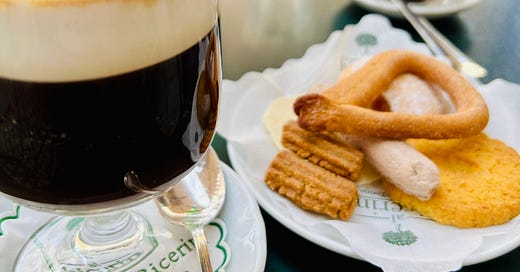



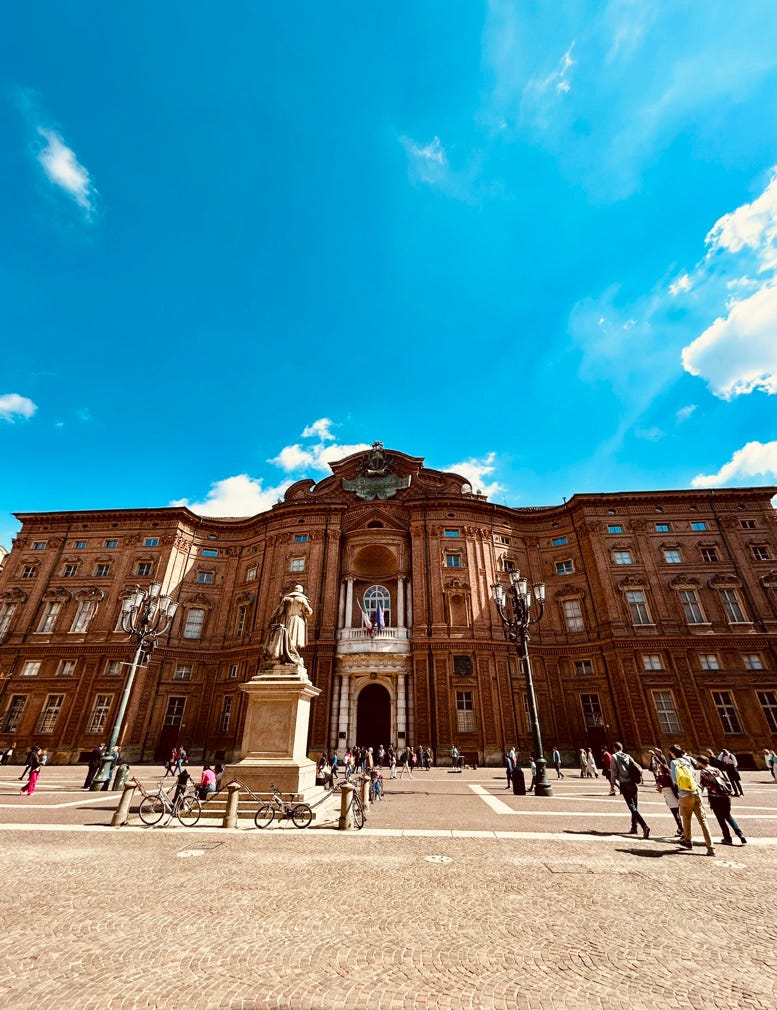
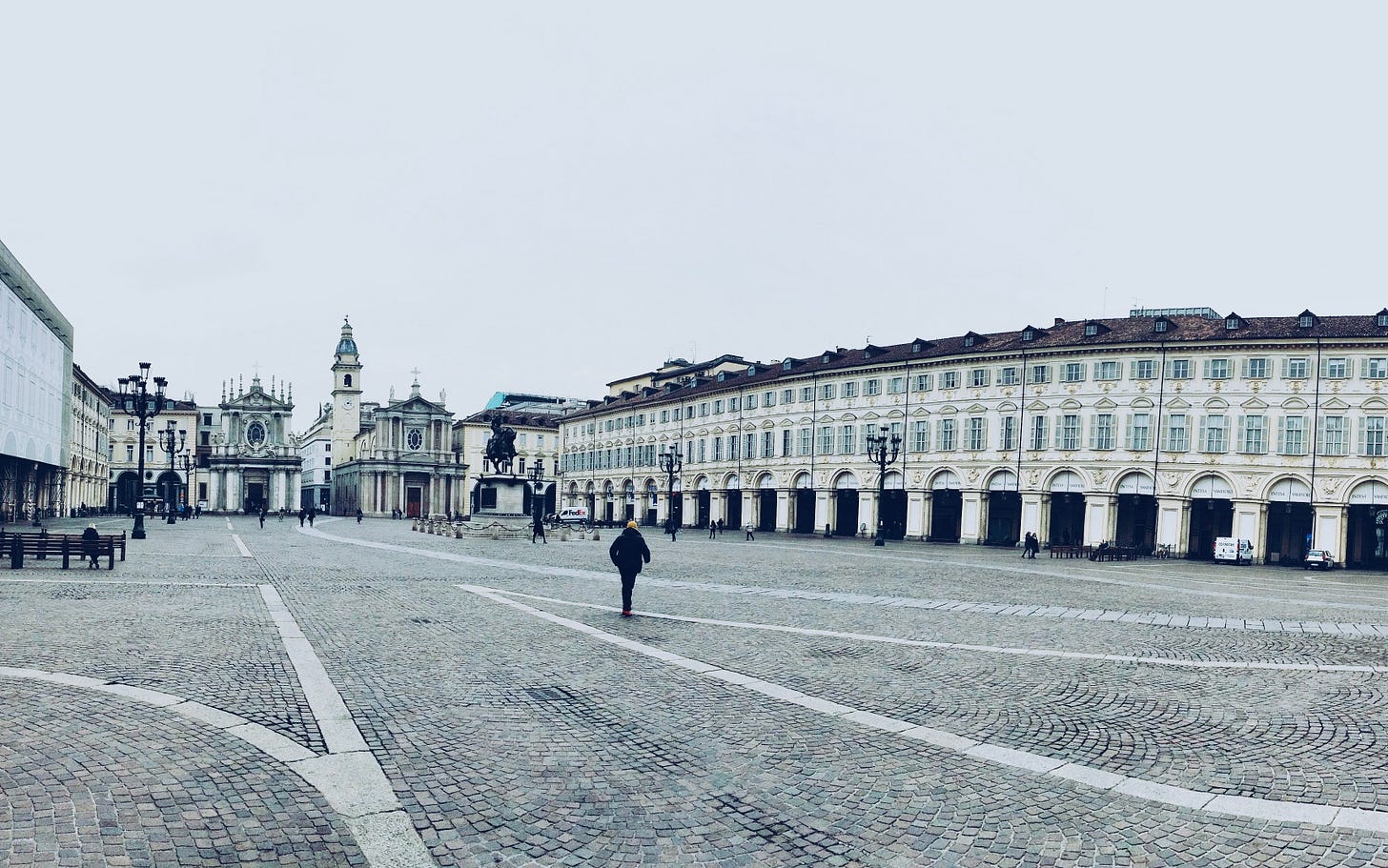
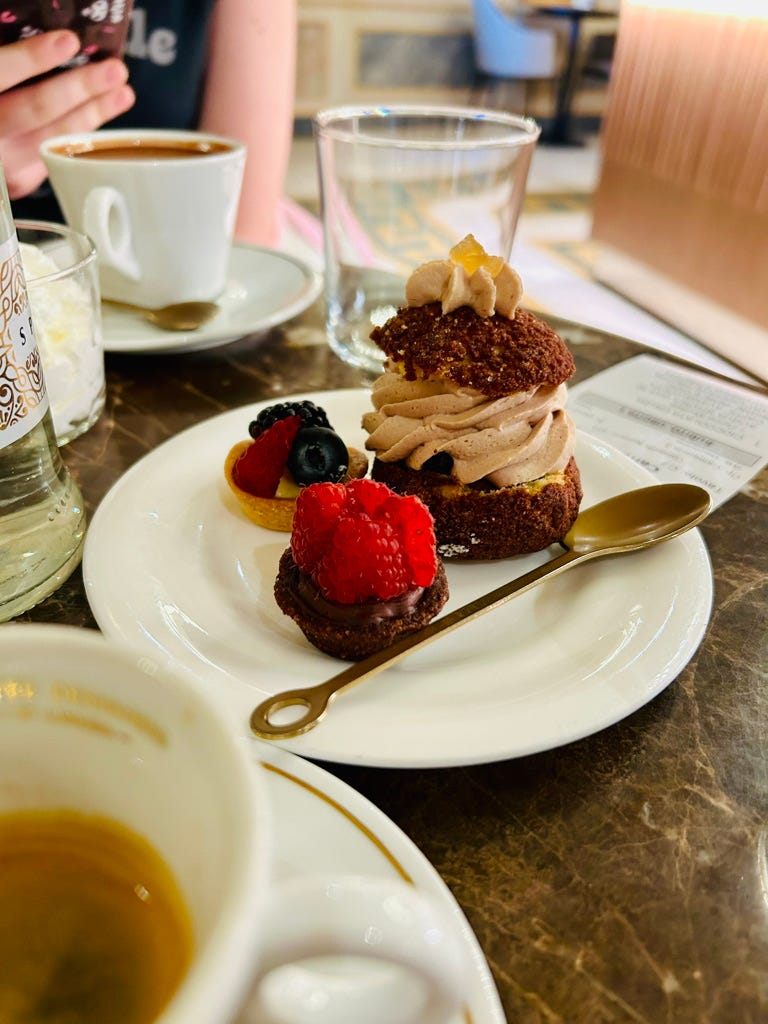
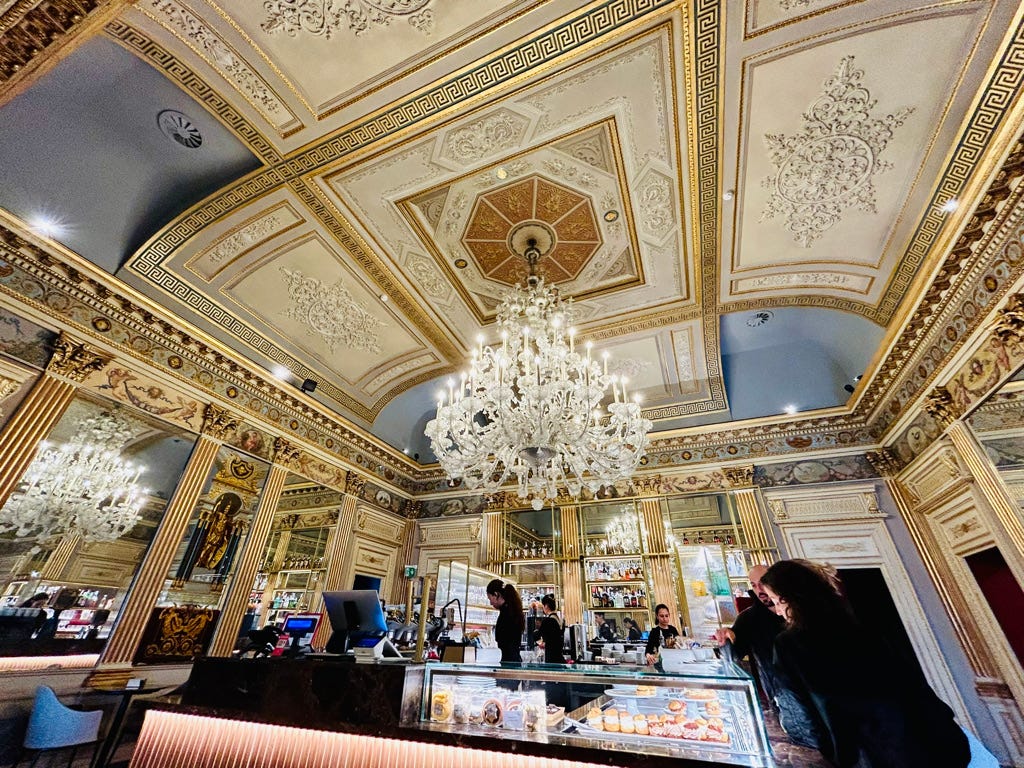
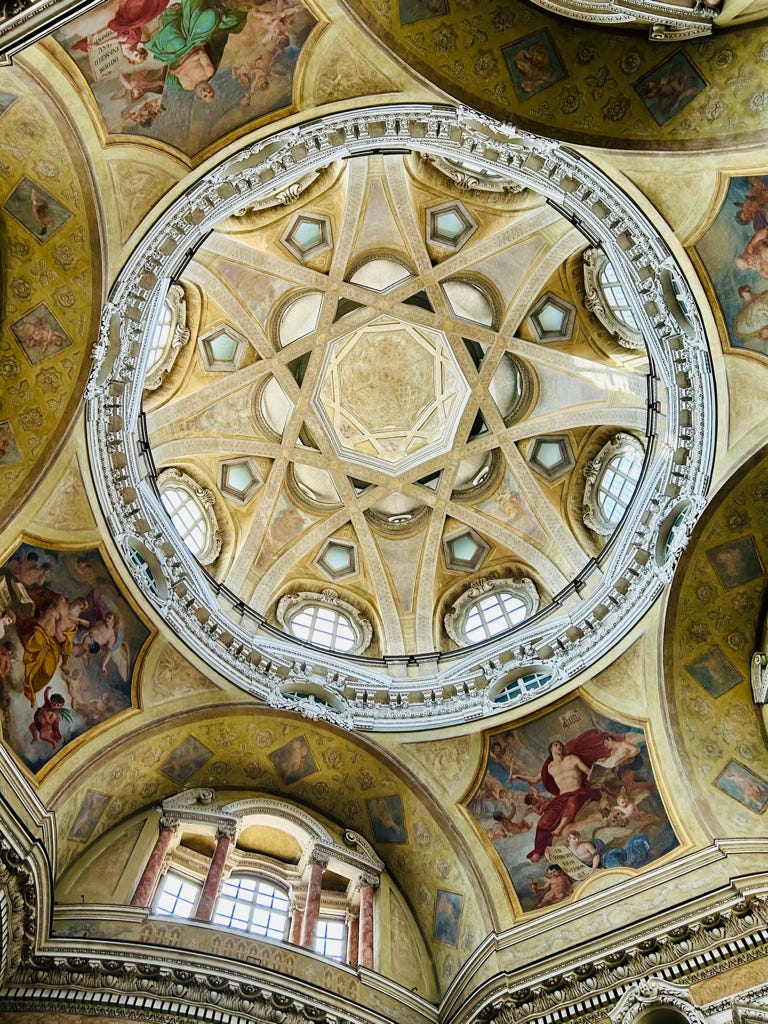


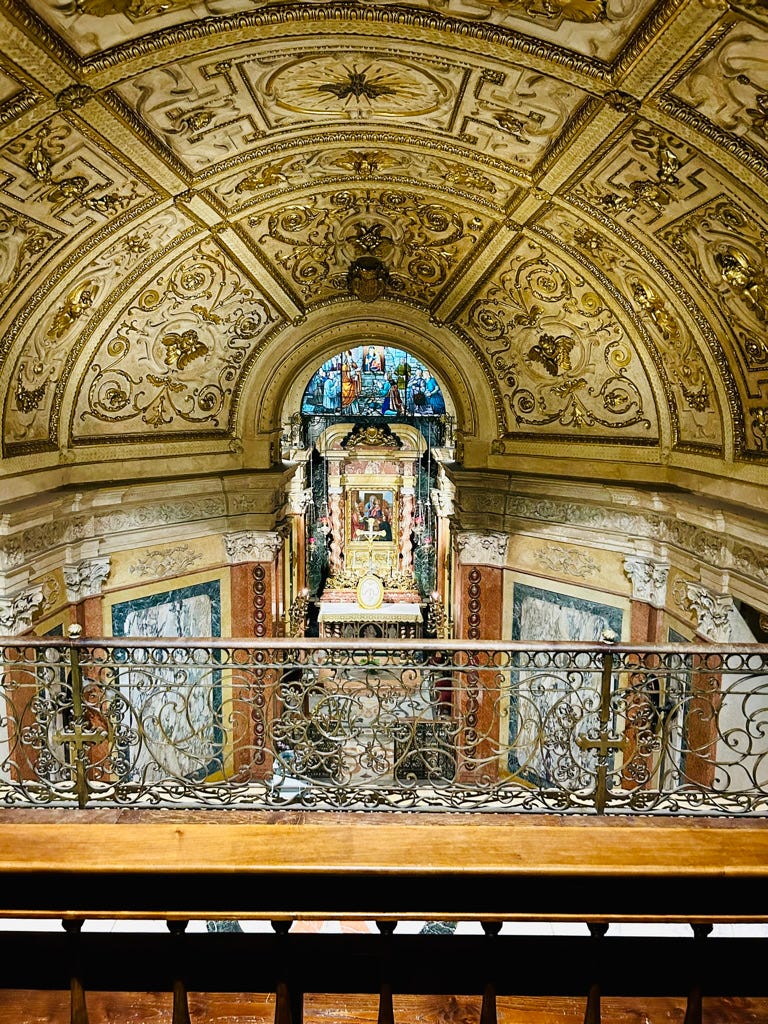
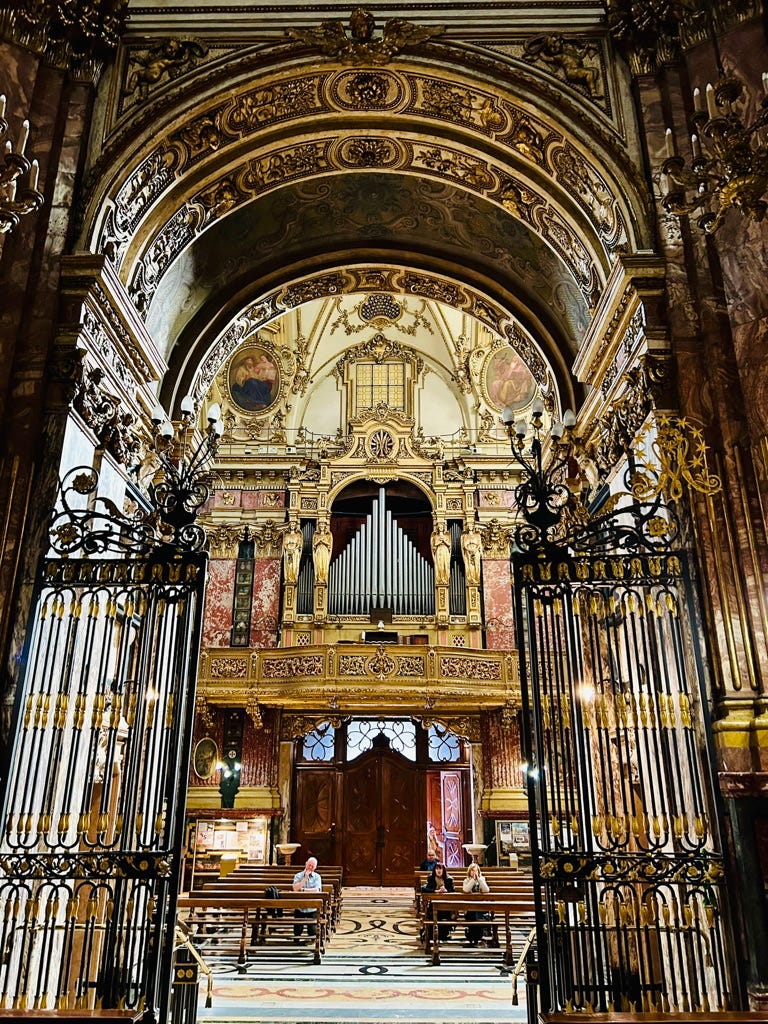
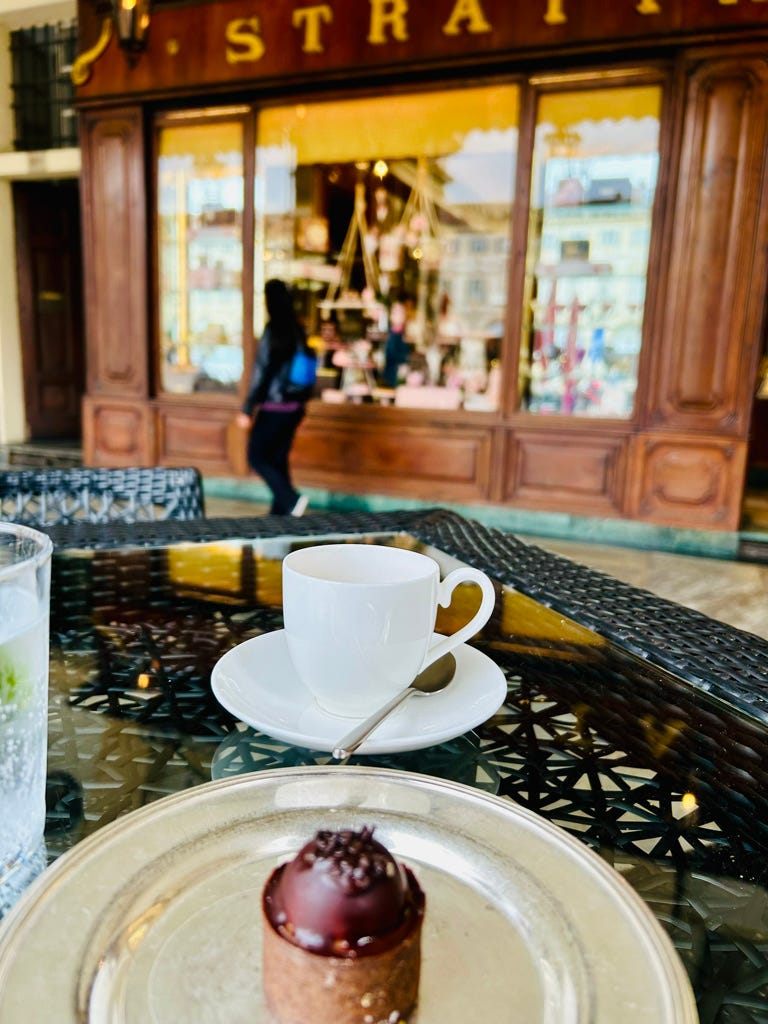
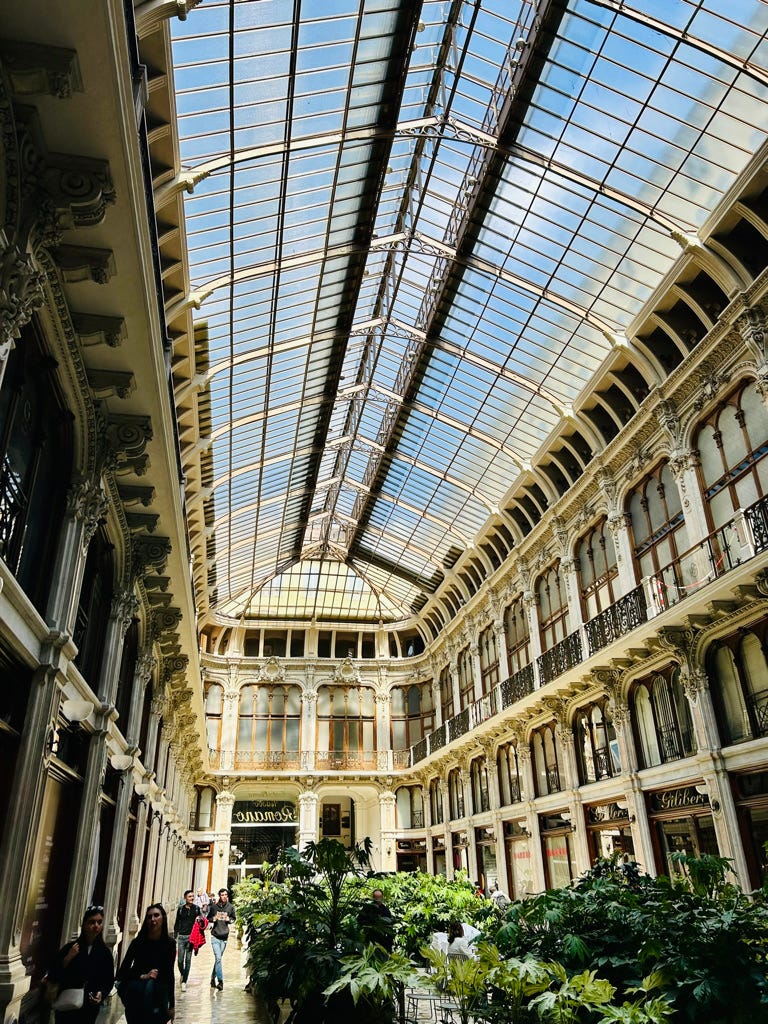
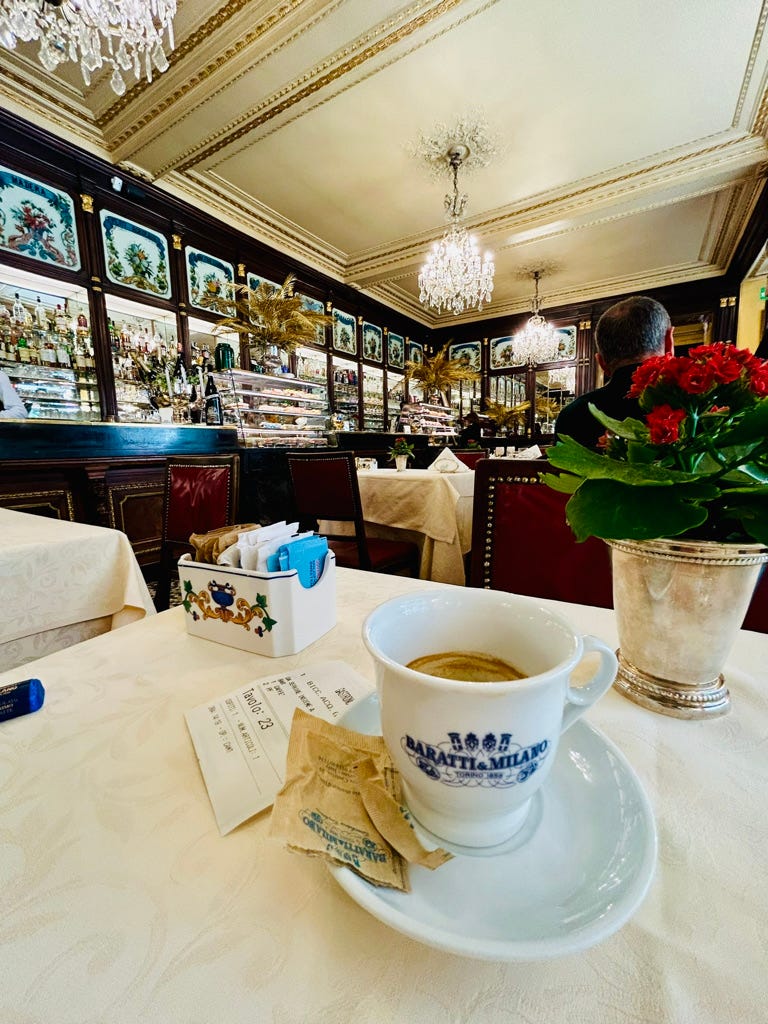

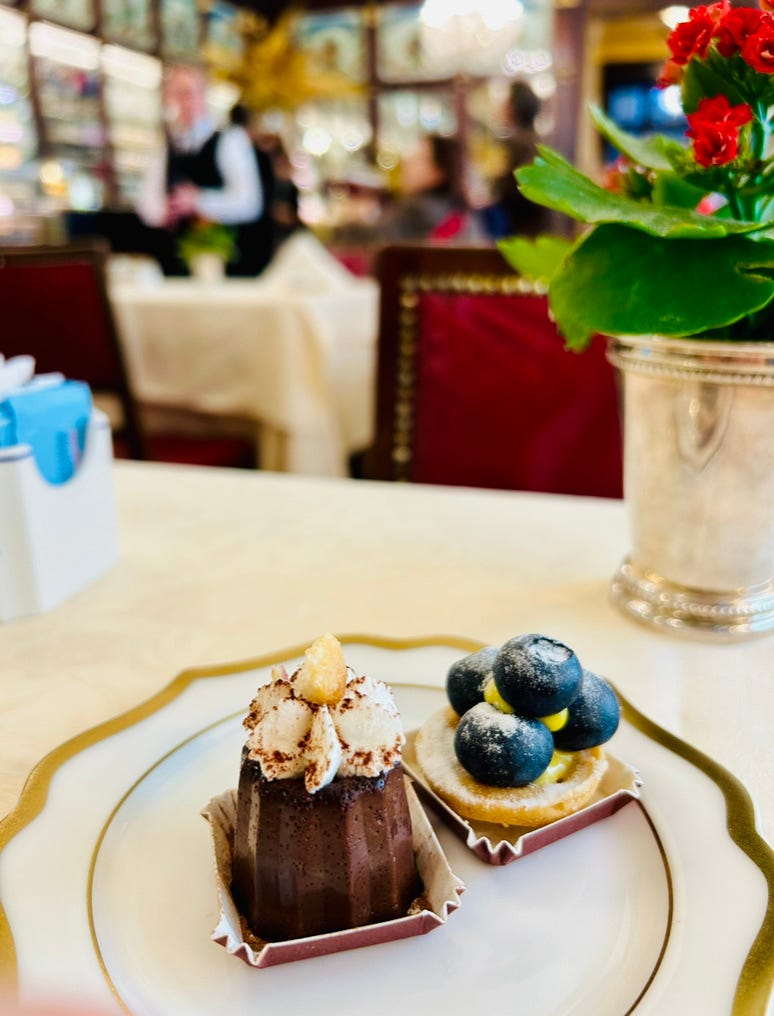
It was so lovely strolling along with you, in a literary sense, through Torino and its environs. What a gorgeous stroll!
Great pics of the Guarini architecture -- there's something a little trippy about it, especially the cupola. Those cafés are gorgeous! I wish cafés in NYC had tiny treats like that.